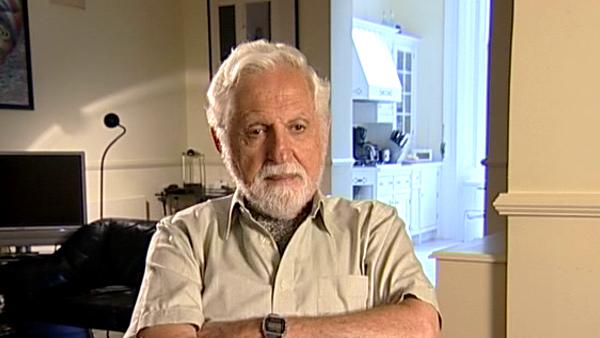NEXT STORY

Women's contribution to X-ray crystallography
RELATED STORIES

NEXT STORY

Women's contribution to X-ray crystallography
RELATED STORIES


|
Views | Duration | |
|---|---|---|---|
| 81. Having my cake and eating it | 85 | 04:03 | |
| 82. Working on natural products chemistry | 94 | 07:17 | |
| 83. The most important contribution that I made in science | 56 | 03:40 | |
| 84. Women's contribution to X-ray crystallography | 175 | 04:36 | |
| 85. Chiroptical methods and mass spectrometry | 80 | 07:17 | |
| 86. Non-destructive spectroscopic methods | 64 | 03:33 | |
| 87. Analysis of all my papers by Eugene Garfield | 86 | 01:48 | |
| 88. Using artificial intelligence in chemistry | 137 | 07:52 | |
| 89. Marine chemistry: discovering new sterols | 72 | 05:58 | |
| 90. Work on sponges: setting up underwater labs | 54 | 02:18 |


But then I moved one step further, and that all started already at Wayne, which was in some respects, in retrospect, remarkable. Because using again the analogy that I used about the, kind of, light sources one had, when I was at Wayne, and not because of Wayne, it was because of the timing, the 1950s, about the only light source you had would be, I think, candles, or maybe a little flashlight. They didn’t have yet the flash camera, or anything like that, so you had to be very ingenious and clever, and intuitive to extrapolate from what you saw with brief exposures with small lights, to draw... to draw the entire picture. So I also became interested in methodology, in trying to develop better lights, if you use that. Now, I’m not an engineer, so I was not really interested in... in finding new... building new batteries or building new cameras, or something like this, but I wanted to know how one could use much more intelligently, existing ones. And that, I think, if I'd have to summarise what is the most important contribution that I made in science, in chemistry, as a scientist, as a chemist I would say it is not the synthesis of cortisone, or oral contraceptives, or the many other things that we synthesised, it is not even the structural elucidation of the many natural products we synthesised for the first time, but the application of methodologies that we developed over the years, and I would say, of the horrible number of papers that I’ve published, some 1,200 or so, I guess that probably well over half of them, if not more, are really on the application of physical methods in organic chemistry, and that I think is, in many respects the longest lasting and most important contribution that I made in chemistry, because at that time when we did this, this was not fashionable and it was done by very few people.
Now, of course, it’s so accepted that people forget that completely and take it for granted, but that I think was the interesting one, and the methods that I got involved in, the first one... Well, let me say, the physical methods that organic chemists use, and the order in which we use them is, first of all, ultraviolet spectroscopy, then infrared spectroscopy, then nuclear magnetic resonance spectroscopy, then mass spectrometry, and then some of the more specialised ones, like, electron spin resonance, or optical auditory dispersion, or circular dichroism and so on. These are all... I purposely say that, because these are words, which are completely meaningless to the average person, or even when I say infrared spectroscopy, well, you know, they’ve heard these words, but even that, they don’t really know what spectral range you’re really dealing with, and ultraviolet spectroscopy, maybe intuitively people know that ultraviolet is here and infrared is there, but that’s about as much as they know, but what is it that you find out in this spectral region and that one, let alone X-rays, which of course becomes X-ray crystallography.
Austrian-American Carl Djerassi (1923-2015) was best known for his work on the synthesis of the steroid cortisone and then of a progesterone derivative that was the basis of the first contraceptive pill. He wrote a number of books, plays and poems, in the process inventing a new genre, 'science-in-fiction', illustrated by the novel 'Cantor's Dilemma' which explores ethics in science.
Title: The most important contribution that I made in science
Listeners: Tamara Tracz
Tamara Tracz is a writer and filmmaker based in London.
Tags: Wayne State University
Duration: 3 minutes, 40 seconds
Date story recorded: September 2005
Date story went live: 24 January 2008